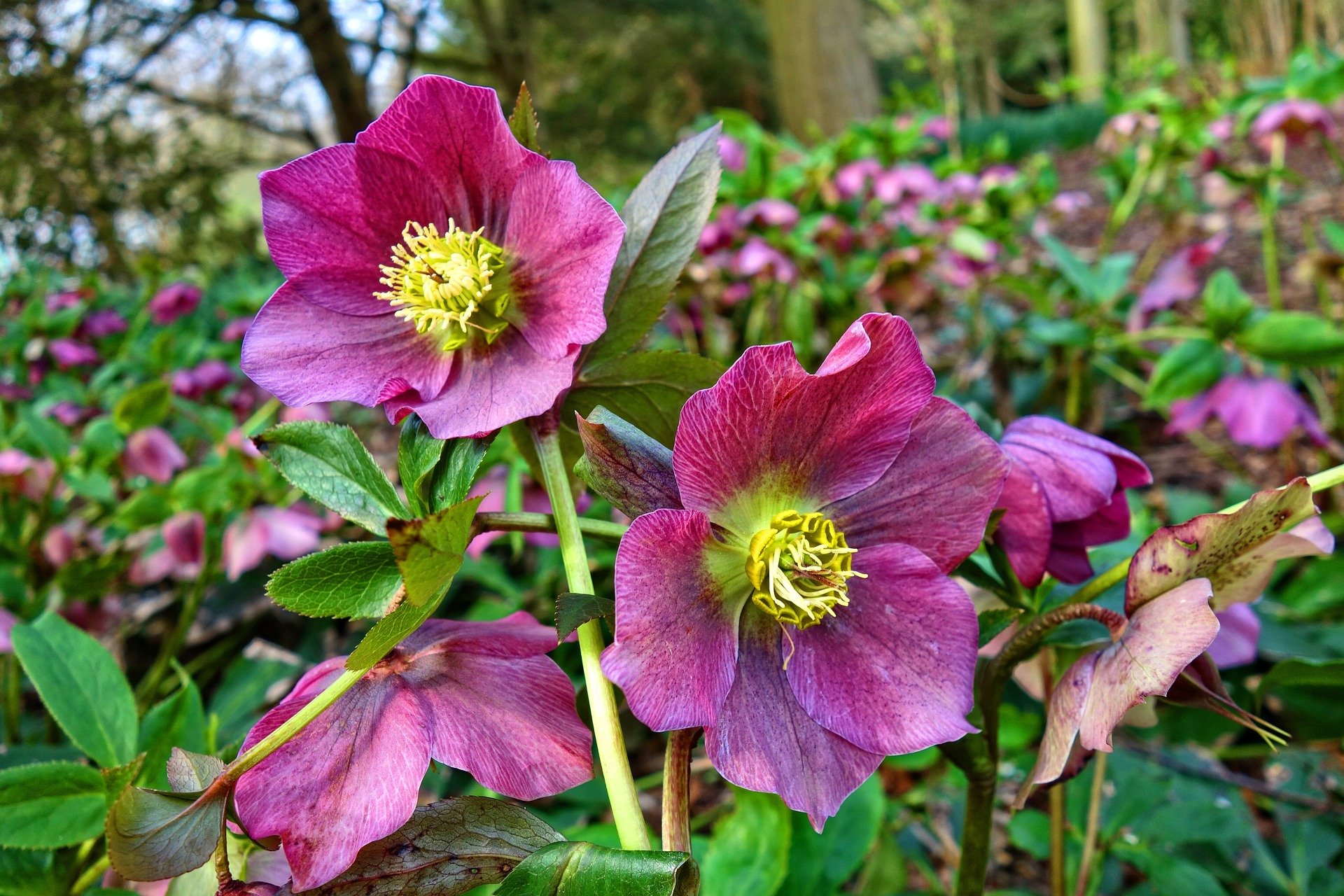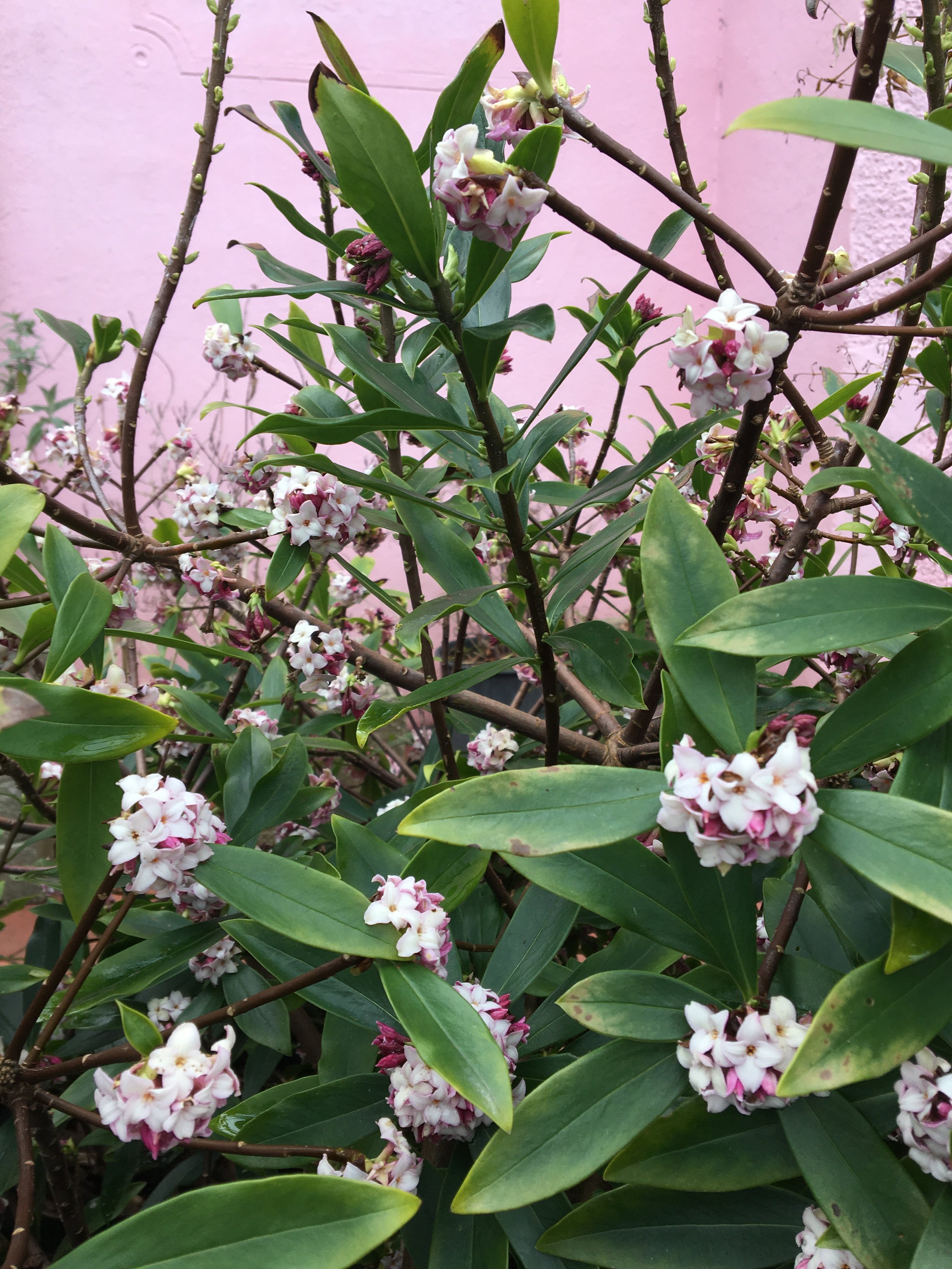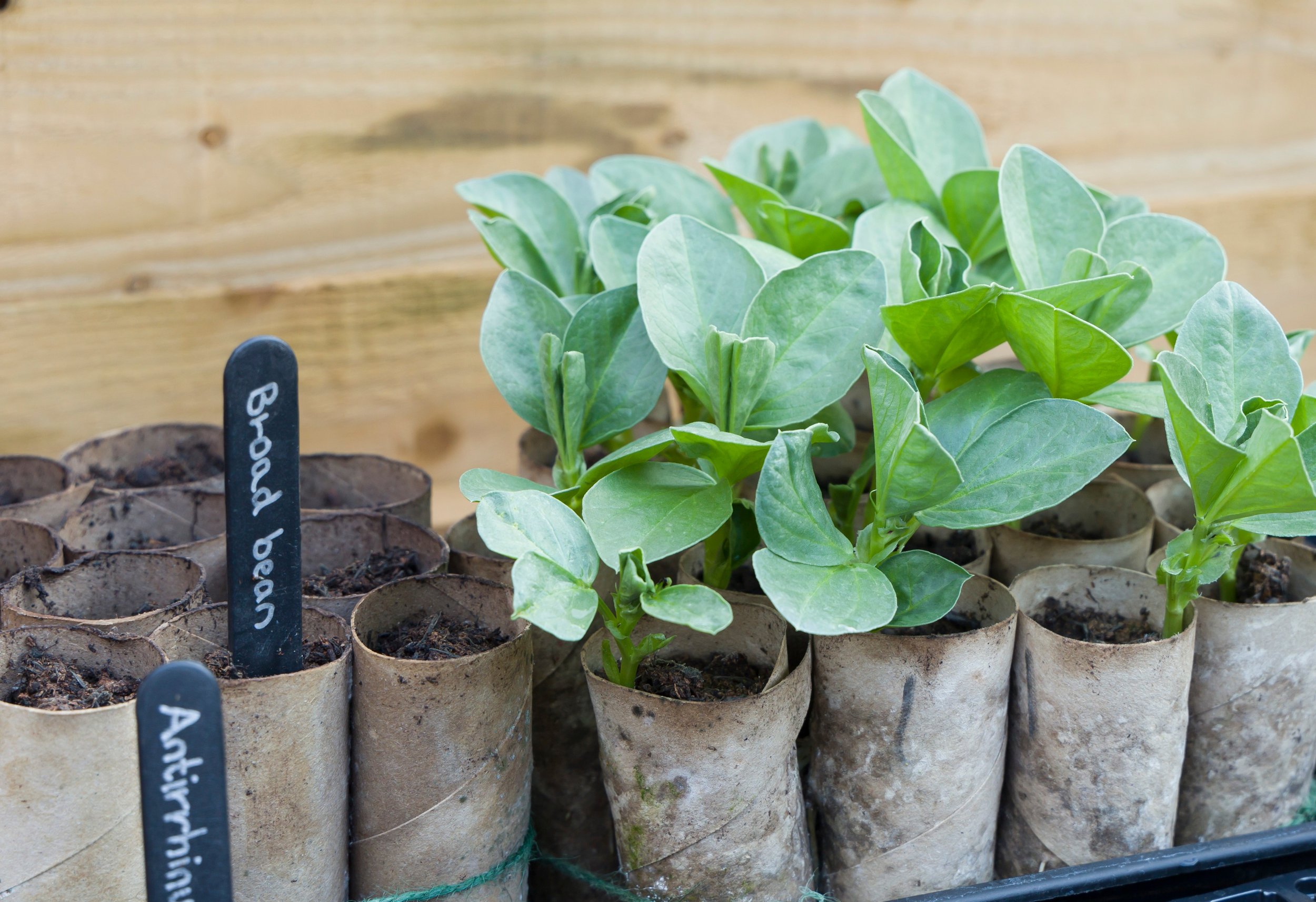Gardening jobs for January
January is the perfect month for planning and preparation for the gardening year ahead, so if the weather keeps you indoors, don’t despair! Here are some jobs to keep you and the children busy this month:
Winter honeysuckle (Lonicera fragrantissima)
Planning for the year ahead:
Take some time to consider how you use your outside space and if you would like to make any changes to it, such as creating a new area for growing food or creating a more welcoming space for wildlife. Get the kids involved by talking through your ideas together; let them choose flower colours they like or look for interesting new fruit and veg seeds to try! Starting a gardening calendar together can also help you put your plans into action and start sowing seeds at the right time.
Be inspired:
If you’re looking for ways to add splashes of winter colour to your outside space, you might find inspiration from walking around your neighbourhood and seeing what catches your eye! Variegated forms of evergreens such as holly and pittosporum will bring life to the garden on a gloomy day, and winter-flowering shrubs such as mahonia, daphne and fragrant winter honeysuckle all flower beautifully in January, which is brilliant for pollinators too! For smaller gardens or containers, hellebores, cyclamen and primroses can all provide a variety of colour before spring-flowering bulbs start to emerge in late winter.
Seed sowing:
Although it’s tempting to sow seeds in January, it's generally too early for many plants. Young seedlings won’t thrive outside until the spring arrives, so if you lack the space to grow them on inside or in a greenhouse, it’s best to wait to another month or so before you start sowing. Having said that, certain plants with a long growing season such as chillies, peppers, and aubergines can be started off on a warm, sunny windowsill. And if you have a greenhouse or cold frame, you can sow broad beans under cover, ready for transplanting in spring.
Planting bare-root trees:
As long as the ground isn’t too wet or frozen, January is a suitable time to plant bare-root trees and shrubs, like roses. Fruit trees and fruit bushes, like currants or blueberries, are a fantastic addition to any garden, and providing they have sufficient sunlight and wind protection, are suitable for small gardens or even balconies. If you would love a tree but your space is limited, opt for cordon or dwarf tree varieties, and ensure they are self-fertile so that only one tree is required to provide you with tasty fruit.
You could also consider planting small trees or shrubs that attract and support wildlife, such as a crab apple or dog rose. Both have flowers that are a good source of early pollen and nectar for insects and bear fruit later in the year which is adored by birds and mammals.
Practical tasks:
If you’re eager to get outside and make preparations for planting, try and resist the temptation to be overly tidy in your garden. Leaving some growth on perennials can provide a habitat for many insects during the winter months. You could even give insects an extra place to hide out over winter by making them a bug hotel - read our post on how to make one here.
If you have bird feeding stations in your garden, remember to keep bird feeders clean and topped up with fresh food, and ensure water supplies remain fresh and unfrozen. You can help keep bird baths and ponds ice-free by floating a small football on the surface to disturb the formation of ice sheets. If you love bird spotting in your garden or on your nature walks, join in with the RSPB’s Big Garden Birdwatch which takes place from the 24th - 26th of January - it’s a great activity for children to take part in and you can record the birds you see from your garden, from your balcony, or even in your local park.
And finally, cleaning old plant pots and seed trays another great job to get the kids to help with! Simply brush off the soil, wash in warm soapy water, rinse well and leave to dry. As well as reusing your old pots, you can also start saving containers like margarine tubs, yoghurt pots and toilet roll tubes to give you a plentiful supply for when seed sowing is in full swing. Not long to wait now!
Author: Alison Kenehan, RHS-qualified gardener and mother
If you’d like to receive regular gardening activities for children alongside nature craft activities, subscribe below to receive a monthly Mud & Bloom box! Each monthly Mud & Bloom box contains two lots of seeds or bulbs to plant and at least two nature craft activities.





